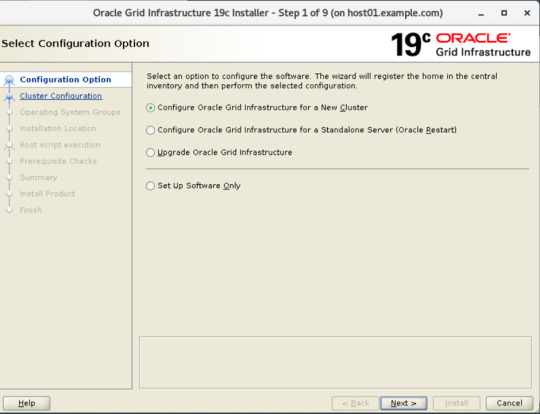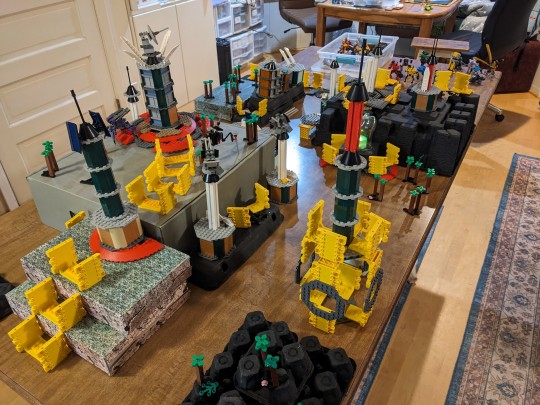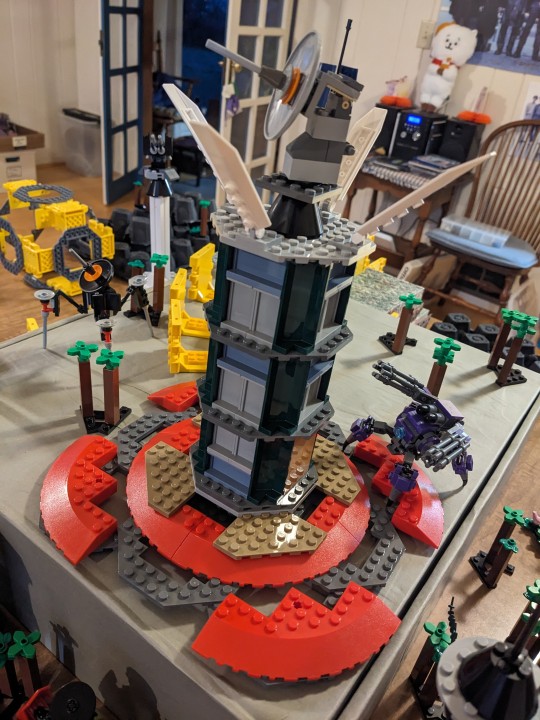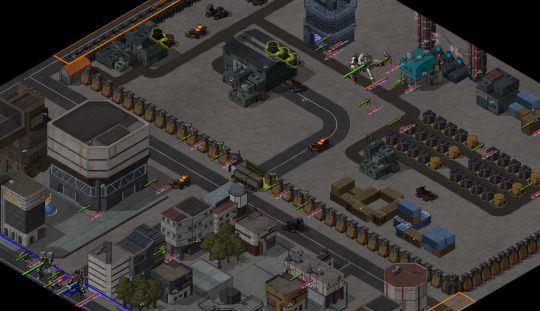#Grid Installation Setup
Explore tagged Tumblr posts
Text
Oracle grid installation steps in Oracle RAC Setup
Steps grid installation steps in Oracle RAC Setup Start with the grid installation software and run the utility 2. Choose the Configure Grid infrastructure for a new cluster and choose the configure an Oracle Standalone Cluster option 3. Specify the Cluster Name, Scan Name, Scan Port & VIP Address on the Grid plug and play information screen. 4. Cluster Node Information in Oracle 5. Add the…

View On WordPress
0 notes
Text
Numerical Relays - Adlite Electricals

Enhance Power System Efficiency with CGI 14N 75-250VDC Relay
For reliable electrical system performance, a high-quality auxiliary relay is essential. The CGI 14N 75-250VDC Relay, available at Adlite Electricals, is designed for superior performance in industrial, commercial, and power utility applications. With its voltage range of 75-250VDC, it ensures stable and efficient operation in electrical protection and automation systems.
What is the CGI 14N 75-250VDC Relay?
The CGI 14N 75-250VDC Relay is an advanced auxiliary relay used in control and protection circuits. It processes electrical signals efficiently and enables precise switching for power management.
Key Features of CGI 14N 75-250VDC Relay
This relay offers exceptional advantages, making it an ideal choice for power system applications:
Wide Voltage Compatibility: Operates efficiently between 75-250VDC, making it suitable for diverse electrical systems.
High-Speed Response: Ensures rapid activation to prevent faults and enhance system safety.
Rugged and Durable Design: Built for long-term use in demanding industrial environments.
Compact and Easy Installation: Allows seamless integration into various electrical setups.
Reliable Contact Multiplication: Enhances control circuit performance and dependability.
Applications of CGI 14N 75-250VDC Relay
The CGI 14N 75-250VDC Relay is widely used in multiple industries due to its high reliability and efficiency, including:
Power Plants: Assists in relay protection and circuit breaker operations.
Industrial Automation: Enables precise switching in manufacturing processes.
Substations: Supports stable grid management and fault isolation.
Renewable Energy Systems: Facilitates integration in solar and wind energy projects for efficient power control.
Why Choose CGI 14N 75-250VDC Relay from Adlite Electricals?
When it comes to sourcing top-quality electrical protection devices, Adlite Electricals is your trusted provider. Here’s why:
Genuine and Certified Products: Ensuring superior quality and reliability.
Affordable Prices: Get the best value for high-performance electrical components.
Hassle-Free Online Shopping: A seamless purchasing experience with expert support.
Fast and Secure Delivery: Ensuring timely arrival of your relay in perfect condition.
Conclusion
The CGI 14N 75-250VDC Relay is a must-have for industries that require a dependable, high-speed, and durable relay solution. Its wide voltage range and compact design make it ideal for numerous electrical applications.
Order your CGI 14N 75-250VDC Relay today from Adlite Electricals and enhance your system’s efficiency and safety!
Related Products
#CGI 110VDC Master Trip Relay
#CGI 14C 18-52VDC Relay
#CGI 14C 75-250VDC Relay
#CGI 14N 18-52VDC Relay
#CGI 14S 230VAC Relay
#CGI 24C 18-52VDC Relay
#CGI 24C 75-250VDC Relay
#CGXH1 3 Element Aux 110 VDC Relay
#Crompton TCSR Unit 110 VDC Relay
#Megawin M140c Relay
#Megawin MB 140c (Breaker Manager Relay)
#Enhance Power System Efficiency with CGI 14N 75-250VDC Relay#For reliable electrical system performance#a high-quality auxiliary relay is essential. The CGI 14N 75-250VDC Relay#available at Adlite Electricals#is designed for superior performance in industrial#commercial#and power utility applications. With its voltage range of 75-250VDC#it ensures stable and efficient operation in electrical protection and automation systems.#What is the CGI 14N 75-250VDC Relay?#The CGI 14N 75-250VDC Relay is an advanced auxiliary relay used in control and protection circuits. It processes electrical signals efficie#Key Features of CGI 14N 75-250VDC Relay#This relay offers exceptional advantages#making it an ideal choice for power system applications:#•#Wide Voltage Compatibility: Operates efficiently between 75-250VDC#making it suitable for diverse electrical systems.#High-Speed Response: Ensures rapid activation to prevent faults and enhance system safety.#Rugged and Durable Design: Built for long-term use in demanding industrial environments.#Compact and Easy Installation: Allows seamless integration into various electrical setups.#Reliable Contact Multiplication: Enhances control circuit performance and dependability.#Applications of CGI 14N 75-250VDC Relay#The CGI 14N 75-250VDC Relay is widely used in multiple industries due to its high reliability and efficiency#including:#Power Plants: Assists in relay protection and circuit breaker operations.#Industrial Automation: Enables precise switching in manufacturing processes.#Substations: Supports stable grid management and fault isolation.#Renewable Energy Systems: Facilitates integration in solar and wind energy projects for efficient power control.#Why Choose CGI 14N 75-250VDC Relay from Adlite Electricals?#When it comes to sourcing top-quality electrical protection devices#Adlite Electricals is your trusted provider. Here’s why:
0 notes
Text
Lancer on a physical tabletop with Lego minis!



We finally did the thing! I roped my siblings into playtesting a game of Lancer using Legos and a physical tabletop. The sitrep was to destroy five buildings, marked in red, because the Karrakins were using the installation to track their mobile hidden base (our home campaign is a blatant ripoff of Deserts of Kharak).




Things that need improvement:
better way to measure tiles. We were doing 4cm/space and had to do a lot of multiplication. Going to try wood dowels with tiles marked + get some kind of grid underlay.
similarly, we need aoe templates
I used too much terrain, it got messy
should get status rings/tokens to mark lock-on, etc



Things that worked well:
it was sick as hell to be able to physically destroy Lego terrain and mechs as they fell
we used physical dice? For lancer?? And it turns out clicky clack math rocks continue to be inherently great.
witchdice works well on mobile devices for character sheets so not every PC had to have a full laptop
different height-terrain was fun, though it made movement costs tricky to calculate
I'm excited to keep trying out different setups. All the terrain and stuff I've collected is pretty modular (lego makes that easy) so it'll be fun to see how wide a range of map types is possible.
1K notes
·
View notes
Text
drive to survive: uncut - series masterlist


hi! so this is going to be a series im starting because i desperately miss watching dts and seeing danny on my screen so i hope you guys enjoy reading this as much as i enjoy writing it! <3
red divider creds: @huraxy

episode one
glitch in the grid
— netflix gets access to driver sim training. instead of intense focus, they find fan favorites rage-quitting, sabotaging each other’s setups, and one driver who just uses the rig to play mario kart.
episode two
hidden mics and cold war
— a mic catches a spicy bit of team gossip—now every driver is paranoid, and everyone suspects netflix. the producers encourage it. someone installs a hidden mic in the paddock espresso machine.
episode three
no one wants to talk to lance
— an awkward episode where netflix tries to focus on an underperforming driver. they follow him around the paddock—except no one will interview, partner, or even sit next to him. it’s comedy and tragedy at once.
episode four
when engineers snap
— netflix starts filming the engineers… and finds out they’re even more dramatic than the drivers. a lead engineer has a vendetta against a torque wrench, and one refuses to speak to a driver after “brake map betrayal.”
episode five
for you page
— a few rookies rent a house near silverstone and secretly film chaotic f1-themed tiktoks. netflix finds out only after one of the videos goes viral. now there's a race to secure the rights before it hits mainstream media.
episode six
helmets, lies, and livery
— a surprisingly heated episode about drivers’ helmet designs. several arguments, one destroyed paint job, and a side plot where netflix gets blamed for a design leak… they didn’t cause. (or did they?)
episode seven
merch drop mayhem
— a behind-the-scenes look at team merch launches: delays, fan backlash, rival drivers wearing each other’s merch as jokes, and a full meltdown when a limited-edition bucket hat goes missing.
episode eight
driver swap, brainrot
— a filler episode turns into gold when two drivers agree to swap roles with some team members for a day: one pretends to be a pr rep, the other becomes a garage assistant. it devolves fast. netflix keeps rolling.
episode nine
netflix curse
— drivers begin to believe netflix filming them brings bad luck. superstitions rise. one driver makes them wear matching socks. another starts exorcising the netflix trailer with incense before race weekends.
episode ten
cameos and chaos
— actors, influencers, and ex-drivers show up at the paddock, and netflix tries to force “celebrity interactions” into the edit. the drivers are unimpressed, the celebs are confused, and one driver starts fake-dating a pop star just to troll them.
episode eleven
paddock karaoke
— netflix throws a “fun bonding night” with karaoke. a disaster. one team principal sings abba, a driver does a haunting ballad that makes everyone cry, and someone stage-dives into a team sponsor rep.
episode twelve
the lost episode
— an entire race weekend is accidentally erased from the hard drive. the team has to reconstruct it using security footage, memes, driver phone videos, and one bodycam from an angry pit crew member.
#formula one fanfic#max verstappen#f1 fanfic#lando norris#oscar piastri#f1 rookies#charles leclerc#carlos sainz#daniel ricciardo#f1 2025#dts#drive to survive#series
24 notes
·
View notes
Text
3 Phase Solar Inverter by Ksquare Inverter
If you're looking for a reliable and efficient solar inverter solution for commercial or industrial applications, the 3 Phase Solar Inverter from Ksquare Inverter is worth exploring.

Why 3 Phase Solar Inverters?
Unlike single-phase inverters, 3 phase solar inverters distribute energy more evenly across all three wires of the power system. This results in:
Better load balancing
Higher efficiency for large-scale solar systems
Reduced power loss
Enhanced system reliability
Whether it’s for a commercial rooftop installation or an industrial setup, a 3 phase inverter ensures your system runs smoothly and efficiently.
Introducing Ksquare’s 4-25kW 3 Phase Solar Inverter
At Ksquare, innovation meets sustainability. Their 4-25kW 3 phase solar inverters are designed to maximize power output while ensuring long-term durability and safety.
Key Features:
Wide MPPT voltage range for optimized performance
IP65 protection – perfect for outdoor use
Smart monitoring capabilities via WiFi/GPRS
Anti-islanding protection for grid safety
Compact and lightweight design
Also : High-Efficiency 3 Phase Solar Inverter – Ksquare
Why Choose Ksquare Inverter?
🔹 Indian-engineered for Indian conditions 🔹 Certified and tested for safety and quality 🔹 Trusted by installers nationwide 🔹 Excellent post-sales support

Whether you're upgrading an old system or building a new solar plant, Ksquare Inverter offers the right technology to ensure a strong return on your investment.
Final Thoughts
The future is solar, and the Ksquare 3 Phase Solar Inverter is a solid step in the right direction. Backed by modern features, robust build, and reliable support, it’s a choice you can count on.
👉 Check out the product here: Ksquare 4-25kW 3 Phase Inverter 🔧 Perfect for: Industries, large buildings, commercial setups, solar farms
@ksquareinverter
#KsquareInverter#solarinverter#ksquareenergy#solarpanel#3phaseinverter#solarpanelinstallation#solar energy#solar power
2 notes
·
View notes
Text
Cost of Setting Up an Electric Vehicle Charging Station in India (2025 Guide)

With India accelerating its transition to electric mobility, the demand for EV charging stations is growing rapidly. Whether you're a business owner, real estate developer, or green tech enthusiast, setting up an electric vehicle (EV) charging station is a promising investment. But how much does it really cost to build one? Let's break it down.
Before diving into the costs, it's important to understand the types of EV chargers and the scope of services provided by modern EV charging solution providers like Tobor, a rising name in the EV infrastructure space offering smart, scalable, and efficient EV charging solutions across India.
Types of EV Charging Stations
Understanding the charger types is essential, as this heavily influences the overall cost:
1. AC Charging Stations
AC (Alternating Current) chargers are typically used for slower charging applications, ideal for residential societies, office complexes, and commercial locations with longer dwell times.
Level 1 Chargers: 3.3 kW output, suitable for two- and three-wheelers.
Level 2 Chargers: 7.2 kW to 22 kW, suitable for four-wheelers (e.g., home or workplace).
2. DC Fast Charging Stations
DC (Direct Current) chargers are used where quick charging is required, such as highways, malls, or public parking zones.
DC Fast Chargers: Start from 30 kW and go up to 350 kW.
They can charge an electric car from 0 to 80% in under an hour, depending on the vehicle.
Cost Breakdown for EV Charging Station Setup
The total cost to set up an electric car charging station in India can vary depending on the type of charger, infrastructure, and location. Here is a detailed breakdown:
1. EV Charging Equipment Cost
The cost of the electric car charger itself is one of the biggest components:
AC Chargers: ₹50,000 to ₹1.5 lakh
DC Fast Chargers: ₹5 lakh to ₹40 lakh (depending on capacity and standards like CCS, CHAdeMO, Bharat DC-001)
Tobor offers a range of chargers including TOBOR Lite (3.3 kW), TOBOR 7.2 kW, and TOBOR 11 kW – suitable for home and commercial use.
2. Infrastructure Costs
You’ll also need to invest in site preparation and power infrastructure:
Land Lease or Purchase: Costs vary widely by city and location.
Electrical Upgrades: Transformer, cabling, and power grid integration can cost ₹5 to ₹10 lakh.
Civil Work: Parking bays, shelter, lighting, signage, and accessibility features – ₹2 to ₹5 lakh.
Installation: Depending on charger type and electrical capacity, installation can range from ₹50,000 to ₹3 lakh.
3. Software & Networking Costs
Smart EV charging stations are often connected to networks for billing, load management, and user access:
EVSE Management Software: ₹50,000 to ₹2 lakh depending on features (Tobor integrates smart software as part of its offering).
Mobile App Integration: Enables users to find, reserve, and pay at your station.
OCPP Protocols: Ensures interoperability and scalability of your station.
4. Operational & Maintenance Costs
Running an EV charging station includes recurring costs:
Electricity Bills: ₹5–₹15 per kWh, depending on the state and provider.
Internet Connectivity: ₹1,000–₹2,000 per month for online monitoring.
Station Maintenance: ₹50,000 to ₹1 lakh annually.
Staff Salaries: If you have on-site attendants, this could range ₹1 to ₹3 lakh annually.
Marketing: ₹50,000 or more for signage, promotions, and digital visibility.
Total Investment Required
Here’s an estimate of the total cost based on the scale of your EV charging station:
Type
Estimated Range
Level 1 (Basic AC)
₹1 lakh – ₹3 lakh
Level 2 (Commercial AC)
₹3 lakh – ₹6 lakh
DC Fast Charging Station
₹10 lakh – ₹40 lakh
These costs can vary based on customization, location, and electricity load availability. Tobor offers tailored solutions to help you choose the right hardware and software based on your needs.
Government Support and Subsidies
To promote EV adoption and reduce the cost of EV infrastructure:
FAME II Scheme: Offers capital subsidies for charging stations.
State Incentives: States like Delhi, Maharashtra, Kerala, and Gujarat offer reduced electricity tariffs, subsidies up to 25%, and faster approvals.
Ease of Licensing: As per Ministry of Power guidelines, EV charging is a de-licensed activity, making it easier to start.
Return on Investment (ROI)
An EV charging station in a good location with growing EV traffic can break even in 3 to 5 years. Revenue comes from:
Charging fees (per kWh or per session)
Advertisement and partnerships
Value-added services (e.g., parking, cafés, shopping zones nearby)
Final Thoughts
With India's electric mobility market booming, setting up an EV charging station is not only a sustainable choice but also a profitable long-term investment. Whether you're a fleet operator, business owner, or infrastructure developer, now is the perfect time to invest.
For reliable equipment, integrated software, and end-to-end EV charging solutions, Tobor is one of the leading EV charging solution providers in India. From residential setups to large-scale commercial EVSE projects, Tobor supports every step of your journey toward green mobility.
2 notes
·
View notes
Text
Analog vs. Digital Meters: Understanding the Differences and Applications

In today’s increasingly connected and technologically advanced world, precise electrical measurement is critical for efficient power management and system monitoring. Two primary tools dominate the field of electrical measurement: analog meters and digital meters. While both serve the same fundamental purpose — measuring electrical quantities like voltage, current, and frequency — their technology, design, readability, and application differ significantly.
This article explores the key differences between analog and digital meters, their respective advantages, disadvantages, and common use cases to help you make an informed decision when selecting the right meter for your needs.
What Are Analog Meters?
Analog meters are traditional instruments that display measurement readings through a mechanical needle moving over a graduated scale. They have been widely used for decades in industries, commercial applications, and even residential setups.
Key Features of Analog Meters:
· Use of moving coil or iron vane mechanisms
· Continuous scale display
· Passive operation (no power required in many types)
· Simple, durable construction
Common Types:
· Analog Voltmeters
· Analog Ammeters
· Analog Frequency Meters
· Analog Power Factor Meters
Advantages of Analog Meters:
· Easy to interpret trends and fluctuations
· Cost-effective for basic applications
· Operate without auxiliary power
· Better tolerance to transient spikes and overloads
Limitations:
· Lower accuracy compared to digital meters
· Manual reading required
· Parallax error due to needle reading
· Limited data logging or interfacing capabilities
What Are Digital Meters?
Digital meters represent a more modern approach to electrical measurement. These devices convert analog signals into digital values, displaying results on an LCD or LED screen. They are widely used in automation, smart grids, and precision engineering environments.
Key Features of Digital Meters:
· High-resolution digital display
· Advanced microprocessor control
· MODBUS communication (RS-485 interface)
· Programmable settings and alarms
Common Types:
· Digital Voltmeters
· Digital Ammeters
· Digital Frequency Meters
· Digital Multifunction Meters (VAF, kWh, Power Factor, etc.)
Advantages of Digital Meters:
· High accuracy and readability
· Remote monitoring capabilities
· Compact and modern design
· Enhanced functionalities like data logging, alarms, and networking
Limitations:
· Higher initial cost
· Requires auxiliary power
· More complex installation in some cases

Applications of Analog and Digital Meters
Where Analog Meters Excel:
· Educational institutions for teaching fundamentals
· Industrial environments where ruggedness is key
· Backup or emergency systems where power is limited
· Low-budget installations
Where Digital Meters Lead:
· Smart panels and industrial automation
· Energy monitoring systems
· Commercial buildings and infrastructure
· Remote power distribution networks
Choosing the Right Meter: Factors to Consider
When deciding between analog and digital meters, consider the following:
1. Accuracy Requirements — For precision tasks, digital meters are the preferred choice.
2. Budget Constraints — Analog meters offer a cost-effective solution for basic needs.
3. Environment — Analog meters can be more tolerant in high-temperature or high-vibration areas.
4. Communication Needs — If integration with SCADA or monitoring systems is needed, go digital.
5. Data Analysis — For trend tracking and analytics, digital meters with memory and communication ports are ideal.
Enza Electric: Your Trusted Source for Analog and Digital Meters in the UAE
At Enza Electric, we provide a comprehensive range of analog and digital panel meters tailored to meet diverse electrical monitoring needs. Our digital meters support RS-485 MODBUS, enabling seamless integration into modern automation systems. Whether you’re looking for reliable analog meters for legacy systems or advanced digital meters for new installations, Enza Electric has the expertise and inventory to deliver.
We offer:
· Voltmeter, Ammeter, and Frequency meters in both analog and digital forms
· Multifunction VAF meters
· Panel meter sizes: 72x72mm and 96x96mm
· Customizable CT and PT ratios
Conclusion
Both analog and digital meters play important roles in today’s electrical systems. While analog meters offer simplicity and durability, digital meters bring precision, connectivity, and intelligence. Understanding their differences and applications is key to choosing the right tool for your project.
For expert guidance and high-quality meters, contact Enza Electric — one of the leading electrical measurement solution providers in the UAE.
#AnalogMeters#DigitalMeters#PanelMeters#ElectricalMeasurement#PowerMonitoring#ElectricalEngineering#EnergyMeters#IndustrialAutomation#MeteringSolutions#Instrumentation#electrical#switchgear#dubai#low voltage#uae
4 notes
·
View notes
Text
How Solar Panels Are Slashing Energy Bills in Algarve

Algarve’s endless sunshine isn’t just for beach days — it’s now a key to major energy savings. Across the region, more residents are turning to solar panels to take control of their electricity costs. With cutting-edge solar installations and storage solutions, many homeowners are seeing their utility bills shrink dramatically — and some are nearly eliminating them altogether.
Let’s explore how this solar revolution is unfolding and why now is the perfect time to get on board.
1. 🌞 The Algarve Advantage: Sunshine = Savings
With over 300 days of sunshine each year, Algarve is one of the best places in Europe for solar installations. The intense, consistent sunlight makes it possible to generate substantial power even with a modest panel setup — making your return on investment fast and reliable.
2. 💡 How Solar Panels Reduce Electricity Costs
Solar panels convert sunlight into electricity that powers your home. Every kilowatt-hour (kWh) produced by your panels is one less you need to buy from the grid. Over time, this adds up to massive savings — especially during Portugal’s hot summers when energy use peaks.
3. 🔋 Boosting Efficiency with Solar Batteries
Modern solar batteries take your savings further by storing unused energy for later. Instead of sending power back to the grid (often for a small return), batteries let you use your own stored energy at night or on cloudy days. This maximizes your energy independence and minimizes your reliance on rising utility rates.
4. 💰 Long-Term Financial Benefits
Besides monthly savings, solar panels also protect you from energy price hikes. The average Portuguese household can save thousands over the system’s 25+ year lifespan — making solar a low-risk, high-reward investment.
5. 🤝 Choosing the Right Solar Company Makes the Difference
A successful solar setup depends on the quality of your solar installer. Voltaicos, Algarve’s trusted solar company, specializes in personalized solar solutions that align with your property, budget, and energy goals. From site inspection to installation and post-care, their team ensures every detail is covered.
6. 📉 Real Results: From High Bills to Solar Wins
Voltaicos clients often report up to 70–90% reductions in their energy bills within the first year. That’s real, measurable savings that start immediately — and only grow over time.
Conclusion: Power Your Home, Not the Grid 💡
If you're ready to stop overpaying for electricity and start owning your energy, solar is the way forward. With the right panels, solar batteries, and a skilled solar installer, your Algarve home can become a model of clean, cost-effective energy.
Who We Are
Author : Marc workman
We’re Voltaicos – Solar Panels Algarve, a solar panel installation company based in the Algarve. We help homeowners make the switch to clean, free, and renewable energy. Our team of solar experts provides a range of low-maintenance solutions — from solar panels and batteries to carports, EV chargers, and even off-grid systems. We speak your language: English, Dutch, German, French, and Portuguese, so communication is easy and clear. Our experienced installers can design and install the ideal solar setup for your home, usually within 4–6 weeks of your first consultation. Get in touch with us today, and one of our solar specialists will get back to you shortly. Let’s harness the Algarve sun together and start saving on your energy bills.
Contact Us
Voltaicos - Solar panels Algarve
Rua 1 de Maio 2, Pedra de Escorregar, Guia, 8200 421, Portugal
+351 926 250 355
https://voltaicos.pt/
Find Us Online
Facebook
Instagram
Linkedin
Youtube Channel
Pinterest
Twitter(X)
Blog
WhatsApp
To Know More
Brand Map
youtube
2 notes
·
View notes
Text
Solar Energy
Solar energy is a renewable and sustainable source of power derived from the sun's radiant light and heat. This energy can be harnessed through various technologies, primarily solar panels and solar thermal systems. It plays a crucial role in the transition toward cleaner and greener energy systems.
Key Features of Solar Energy:
Abundance: The sun provides an inexhaustible supply of energy, with enough sunlight hitting Earth in one hour to meet global energy needs for an entire year.
Clean Energy: Unlike fossil fuels, solar energy does not emit greenhouse gases or pollutants, making it environmentally friendly.
Scalability: Solar energy systems can be tailored for various scales, from small residential setups to large utility-scale solar farms.
Cost Efficiency: Over time, solar energy can significantly reduce electricity bills, and the cost of solar technology has been steadily declining.
Types of Solar Energy Systems:
Photovoltaic (PV) Systems: Convert sunlight directly into electricity using solar panels made of semiconductor materials.
Solar Thermal Systems: Capture and store heat from the sun for applications like water heating, space heating, or electricity generation.
Concentrated Solar Power (CSP): Use mirrors or lenses to focus sunlight onto a small area to produce heat, which is then converted into electricity.
Benefits:
Reduces dependency on nonrenewable energy sources.
Promotes energy independence.
Creates jobs in manufacturing, installation, and maintenance.
Enhances resilience by providing off-grid energy solutions in remote areas.
Challenges:
Dependence on weather conditions and daylight hours.
High initial setup costs, though they are offset by long-term savings and incentives.
Energy storage needs to address intermittent production.
Solar energy represents a cornerstone of sustainable development, helping combat climate change and offering a pathway to a low-carbon future.
3 notes
·
View notes
Text
Why Solar Earthing is Essential for Your Solar Panel System
When you think about solar power, you probably picture sleek solar panels soaking up the sun, cutting down electricity costs, and promoting clean energy. But there’s one crucial element that often goes unnoticed—solar earthing. This unsung hero ensures your solar installation runs safely and efficiently for years.
In this blog, we’ll explore what solar earthing is, why it’s essential, and how it benefits both large solar power plants and smaller solar setups.

What is Solar Earthing?
Solar earthing, also called grounding, is the process of connecting your solar panel system to the earth using conductive materials like copper or galvanized steel. The goal? To safeguard your system and everyone around it from electrical faults or lightning strikes.
Solar panel systems generate electricity, and with that comes the risk of faults due to factors like harsh weather, aging equipment, or unexpected electrical surges. A well-planned earthing system safely directs any stray or excess current into the ground, preventing hazards.
Why is Solar Earthing Important?
1. Ensures Safety for Users and Equipment
Solar systems operate with high electrical loads. Without proper earthing, an electrical fault can lead to dangerous shocks, fires, or damage to your system. A solid grounding setup protects your investment and ensures safety for all.
2. Boosts Efficiency in Solar Power Plants
For large-scale solar power plants, even a minor electrical fault can lead to substantial losses. Solar earthing stabilizes voltage levels, preventing disruptions and maintaining optimal efficiency.
3. Meets Regulatory Standards
Many countries have strict regulations requiring proper solar earthing for installations. Compliance not only helps avoid legal penalties but also guarantees a longer-lasting and safer system.
How Does Solar Earthing Work?
A solar panel system consists of several key components, including:
Solar panels
Inverters
Batteries (for off-grid systems)
Mounting structures
A proper earthing setup connects all these components to the ground using a network of conductors. If an electrical fault or lightning strike occurs, the current safely disperses into the ground instead of damaging the system or posing risks.
Different Types of Solar Earthing
The type of earthing method depends on the size and type of the solar installation. Here are three commonly used methods:
1. Plate Earthing
A metal plate, typically copper or galvanized iron, is buried underground and connected to the system. This is a common method for small-scale residential solar panel setups.
2. Rod Earthing
Metal rods are driven deep into the ground to ensure effective grounding. This method is ideal for larger solar power plants due to its efficiency and ability to handle higher electrical loads.
3. Strip Earthing
Conductive metal strips are laid underground to create a broad earthing network. This method is used for installations requiring a larger grounding surface area.
Key Benefits of Proper Solar Earthing
Enhances the Lifespan of Solar Installations A well-grounded system protects against electrical surges, reducing wear and tear and extending the life of your solar panels.
Improves System Reliability By keeping voltage levels stable, solar earthing ensures uninterrupted performance—even during extreme weather conditions.
Reduces Maintenance Costs A properly earthed system lowers the risk of electrical damage, minimizing costly repairs and replacements.
Provides Peace of Mind Knowing that your solar system is safeguarded from electrical hazards lets you enjoy clean, renewable energy without worry.
Earthing in Large Solar Power Plants
For utility-scale solar power plants, effective earthing is even more critical. These expansive installations require robust earthing systems, often incorporating advanced techniques like lightning arresters, to handle high electrical loads and unpredictable environmental factors.
Challenges in Solar Earthing
Despite its importance, solar earthing faces a few challenges:
Poor Soil Conductivity – In areas where the soil doesn’t conduct electricity well, additional measures like moisture-retaining compounds may be needed.
Corrosion of Earthing Components – Over time, earthing rods and plates may corrode, especially in humid regions. Regular maintenance helps prevent this.
Incorrect Installation – Faulty installation can compromise safety and efficiency. Always rely on experienced professionals to set up your system.
Best Practices for Effective Solar Earthing
Use High-Quality Materials – Opt for durable conductors like copper or galvanized steel for long-term reliability.
Schedule Regular Inspections – Routine maintenance helps catch potential issues early and keeps your system running smoothly.
Follow Local Regulations – Adhering to safety and compliance guidelines ensures your solar installation meets industry standards.
Final Thoughts
While solar earthing may not be the most talked-about aspect of solar energy, it’s one of the most vital. Whether you’re installing a small residential system or a large solar power plant, proper grounding is key to ensuring safety, efficiency, and long-term performance.
By investing in a reliable earthing setup, you’re not just protecting your solar panels you’re ensuring a secure and hassle-free switch to clean energy.
#solar earthing#solar panels for home#best solar panel in india#solar energy#solar panel installation#solar panel system#rooftop solar panels
3 notes
·
View notes
Text
Say Goodbye to Batteries: Discover the Power and Savings of EnerTech UPS's Batteryless Solar Hybrid Inverter!
The expanding use of sustainable power systems has changed a lot over time in the area of solar. Now thanks to the recent development of the Batteryless Solar Hybrid Inverter by EnerTech UPS you can have your reliable solar power without the associated costs and complexity of batteries. This state-of-art inverter allows consumers to utilize solar energy and decrease the energy bills while at the same time decreasing the effects of climate change. Now in this post we will see, why it is unique and why it can be a great addition to your home or business.
What is a Batteryless Solar Hybrid Inverter?
If most solar inverters feature batteries to stored power, then the Batteryless Solar Hybrid Inverter does not. It uses light directly, producing power during the day which is used to power appliances during the day. It does this in the same manner that regular inverters do, drawing from the grid during instances where the sun is not available and ensuring you have an un-interrupted power supply.

Description of the Batteryless Solar Hybrid Inverter by EnerTech UPS
Cost Savings: The batteries are usually one of the most expensive components of a solar installation setup needed to store the energy. The removal of those services is made possible through EnerTech UPS hence lowering the cost of acquiring solar power at a first instance.
Low Maintenance: Batteries generally require servicing and may also be costly to get replaced. As previously said, if there are no batteries required, the inverter requires very minimal maintenance thus the easier and less expensive device to own.
Better Efficiency: In a batteryless system, energy goes directly to appliances the result being minimal energy loss. This means that you maximize returns, on the solar panel investment that you made.
Eco-Friendly: Batteries are made of materials that requires substantial amount of resource when produced and disposed. This inverter being battery-free make things easier going green therefore can be stated to meet the eco goals.
Seamless Switching with the Grid: In times when solar power is not obtainable, the inverter quickly directs the energy prevails to the grid power. This is not going to happen; and the best is that the consumer will not notice anything, apart from a power supply that is never going to fail again.
Reasons why a batteryless inverter will be good for you
1. Lower Costs All Around
Batteries where lumped in and setup was easier and cheaper without them. First, solar power is more affordable than most people think since you reduce on cost of purchasing the equipment and its installation.
2. Saves Space
Batteries are usually large in size. If not for them, you can harness the power of the sun and you don’t necessarily need an area where you can install a storage facility.
3. Long-Lasting and Reliable
Other expenses, like battery replacement, have to be incurred, although batteries do have a finite life-cycle, and need to be replaced every few years. Instead of those replacements batteryless is the system which give more enduring and less complicated and refined.
4. Flexible for Future Growth
However, if there is a change in your needs for energy, you can always incorporate more solar panels to this issues. That way, there’s no need to constantly adapt to battery capacity, making it perfect for increasing energy requirements.
Is This Inverter Right for You?
This makes Batteryless Solar Hybrid Inverter from EnerTech UPS perfect for you, especially if you need an easy, universal and cost-effective way to go solar. This is good for people living in sunny-some areas for instance California and who would like to avoid large utility bills during the day. Still, if you plan to be completely ‘off grid’ or simply require electric power for night use, the battery backed system may still be the best way.
Why Choose EnerTech UPS?
It’s known for its excellent quality products with a very robust structure and customer-oriented services. Their Batteryless Solar Hybrid Inverter is durable and aims to bring solar electricity to the ordinary people out there.
Conclusion
The concept of using solar energy doesn’t have to perfect been portrayed as a difficult one, or even an expensive one. Energy freedom is at your fingertips with EnerTech UPS Batteryless Solar Hybrid Inverter – all made easy, clean, and cost-effective. It might be a perfect option for every person who wants to save money on electricity bills, turn over a new leaf, and have no desire to adjust the levels regularly.
#BatterylessInverter#SolarHybridInverter#SolarEnergy#CleanEnergy#GreenTechnology#EnertechUPS#SustainableLiving#EcoFriendly#SolarPower#RenewableEnergy#SolarInnovation#EnergyEfficiency#SolarForHome#SolarSolutions#BatteryFreeInverter#HybridInverter#EnergySavings#FutureOfEnergy#CostEffectiveSolar#SolarTechnology
2 notes
·
View notes
Note
Hey Hazel,
During the F1 Austria GP weekend, it was occasionally mentioned that the paddock was being powered by solar panels and biofuels as a test of their low-carbon energy systems, or something like that. When I heard that, my first thought was to ask an expert (you) if you had heard anything about that and if the biofuel was something Actually Good or if this is more or less some PR fluff type thing.
Heya,
I actually meant to write about this but then got booked to cover the Spa 24h for Speedcafe and money had to take precedence.
So what they were trialling was a system that runs all the motorhomes and garages, so everything from tyre warmers and the teams’ data systems to, idk, emotional support gamer lights in the driver rooms or whatever.
That’s more power than the circuit will have by being plugged into the national grid, so there’s a need for other power generation. Diesel generators have been the reliable form of choice for mobile events because they’re easy to transport, their fuel is easy to transport, they’re low maintenance and they run consistently. Festivals, sporting events, anything where you need impromptu power they’ve been the answer for decades.
The Austria trial was to replace that with a realistically portable system that F1 can take to tracks without their own on-site, sustainable solutions (some places, like Paul Ricard, already have solar installed) and to make sure it was feasible both in terms of delivering enough power and in being rigged/set up.
Biofuel as a replacement for diesel is pretty good. Diesel is very, very dirty - even burned at low temperatures and steadily in generators. So replacing it with HVO100 (made from hydrogenated vegetable oil which can either be waste product or made from non-food-grade biomaterials) is a significant improvement.
Mercedes recently switched to it in all their trucks for the European rounds and even just the 4% reduction in tailpipe emissions, compared to fossil diesel, will represent somewhere around 23.5 tons less carbon emitted.
But on a full life-cycle of taking fossil fuels out of the ground, transporting, refining and transporting them again it’s a justifiable 70% reduction overall. Some people say 90 but I think it’s better to err towards the lower end - although given how filthy fossil fuel extraction is and the potential for methane emitted at-site, etc, the life cycle emissions are always much worse than you’d estimate anyway.
Solar, especially with a good battery setup, is of course another great use. Portable solar panels are very feasible, given what F1 is already lugging around (about 30 trucks per team...) so that’s valid.
It seems to have been a success, in the sense I didn’t hear about any random garage blackouts or issues. So hopefully that’s a good infrastructural development for future events.
21 notes
·
View notes
Text
Understanding Solar Panel Inverters: Types and Functions
The solar power industry has grown tremendously over the past few decades and is expected to continue growing at over 6% CAGR by 2032. This growth has significantly impacted the solar panel inverter market, which is projected to grow at a 7.7% CAGR over the same period. As a result, solar power stocks have seen a substantial increase. In this article, we'll explore the types and functions of solar panel inverters, a crucial component of any solar power system.

What is a Solar Panel Inverter?
Solar panels consist of silicon photovoltaic (PV) cells that convert sunlight into electrical energy. However, the electricity produced by solar panels is in the form of direct current (DC), which is not suitable for home appliances. Home appliances require alternating current (AC), where the flow of electricity reverses periodically. This is where solar panel inverters come in—they convert DC electricity into AC electricity.
To clarify, DC electricity flows in a single direction, making it efficient for transferring power over short distances without significant losses. However, for practical home use, AC electricity is necessary due to its ability to travel over longer distances with less energy loss. The solar panel inverter acts as an intermediary, converting DC from the solar panels to AC for use in the home or office. Additionally, in an on-grid solar system, the inverter connects the solar panels to the local electricity grid, allowing for net metering and storing excess energy in batteries.
Why is an Inverter Necessary in Solar Power Systems? Solar panel inverters perform several essential functions that make them crucial for any solar power setup:
Converting DC to AC: The primary function of a solar inverter is to convert the DC electricity produced by solar panels into AC electricity, making it usable for home appliances.
Monitoring Solar Panel Performance: Most solar inverters come with built-in monitoring capabilities, allowing you to track the amount of electricity being converted and identify any issues with the solar panels. This feature helps ensure optimal performance and identify potential problems early.
Connecting to the Grid: Inverters connect your solar system to the local utility grid, enabling you to sell excess electricity back to the grid for a credit or financial return. This connection also allows you to draw electricity from the grid when your solar panels aren't producing enough power, ensuring a reliable power supply.
Optimizing Solar Panel Efficiency: Some inverters, such as power optimizers, help maximize the efficiency of each solar panel. Factors like shading, orientation, and debris can cause individual panels to produce different amounts of electricity. Power optimizers adjust the output of each panel to ensure a consistent flow of electricity from the entire array.
Protecting Your Electrical System: Solar inverters also play a protective role by preventing electrical overloads and short circuits. They have built-in safety features that shut down the system in case of overvoltage or other electrical issues, protecting your home and solar investment.

Types of Solar Panel Inverters
There are three main types of solar panel inverters commonly used in residential systems:
String Inverters: This is the most traditional type of solar inverter, similar to a centralized air conditioning system. All solar panels are connected in series to a single inverter. String inverters are most effective in situations where all panels receive equal sunlight without shading. However, if one panel is shaded or malfunctioning, it can reduce the output of the entire system.
Microinverters: Microinverters are installed on each individual solar panel, allowing for more precise energy conversion and monitoring. This setup is ideal for installations where panels face different directions or are prone to shading.
Power Optimizers: Power optimizers combine the benefits of string inverters and microinverters. Each panel is equipped with an optimizer, which adjusts the output to match other panels before sending the DC electricity to a centralized inverter for conversion to AC.
Conclusion Solar panel inverters are essential for converting the DC electricity generated by solar panels into AC electricity suitable for household use. They also play a vital role in monitoring system performance, optimizing efficiency, connecting to the grid, and protecting your electrical system. Choosing the right type of inverter—string inverter, microinverter, or power optimizer—depends on your specific needs, including your budget, site conditions, and energy goals.
2 notes
·
View notes
Note
why did I never start following you I was looking for you in my list of moots and then I realised you were never there... well that's fixed now
anyways the actual question hi!! I've seen you share some lancer campaign stuff (very cool!) and I think you're running your campaign using foundry. is it a good tabletop? I've been using roll20 but I have some beef with it (I ran out of storage space pretty quick) and I checked out foundry real quick cause from what I've seen it's pretty great, but wowie that's quite the price tag (especially for my silly unemployed self).
is it worth it? you got any upsides n downsides you'd like to share with anyone thinking about using it?
thanks for hearing me out! also if I mistook your tabletop for something else you are legally allowed to fire an apocalypse rail at me
Hihi! You're right about me using foundry, I've got a few campaigns I'm running on it (the #my table tag)! Personally I've been liking it much more than I ever did roll20, but it's not quite as plug-and-play as roll20 can be. On the pilot net discord (https://discord.gg/lancer), there's actually a channel dedicated to talking about lancer and vtts, which is a good thing to check for help and options too!
Foundry's like $50 usd, but at least it's a flat price and not a subscription. Also goes on sale every few months so you could wait for one of those to grab it (as of writing this too it's on a 20% anniversary sale too until May 31st). On top of that you have to host stuff yourself, or else set up your own server—I personally set up an external host at https://foundryserver.com/ but obviously that means now I'm paying for a subscription for that and honestly you probably don't need that, I've got a friend who handle hosting herself and it works perfectly.
The thing that's both nice and a lot is the module system. It's got a browser built in so you can search both the stuff in their database, and you can put in links to stuff other people have made, which is where I've installed things like the isometrics look I've got (grape juice isometrics). It also means you do have to spend some time while doing setup adding modules, testing them, figuring out how it works, etc. It also means that if you start having errors and bugs, the debugging process can be a tedious "disable every module and then turn them on one-by-one until you find which one is the problem."
Unfortunately between having to figure out hosting and setting up modules, it's got a lot more overhead for the gm than just spinning up roll20 and having it work out the box. Flip-side, the pilot net discord is really friendly and happy to help explain things. Heck, there's even a guide on google docs (https://docs.google.com/document/d/1VoSrsI_RnlDtrmshNWRdTdY5Xl3eB3oxUxEJt1Vqj44/edit#heading=h.bgdnv8sel1f) people put together for that purpose!
On that note you can almost certainly find someone there who is down to let you play around with their setup as a temp gm.
tl;dr
I think it's worth the price, but you can probably afford to wait until a sale if you're not sure. It's a lot more work for the gm/host to set up, but in turn you have a lot more you can do with it.
also while I have you here, let me get into some specifics
I use starlight furnace's art (https://starlight-furnace.itch.io/) for the tiles and backgrounds, retrograde minis for the mecha (https://www.retrogrademinis.com/) both of which are free.
For foundry modules, I'd recommend
grape_juice-isometrics
Hex Token Size Support
Grid Aware Templates
Drag Ruler
There's also some useful stuff like Drag Upload that can help making things feel more intuitive.
also let me beg your forgiveness for so many words with pretty pictures




4 notes
·
View notes
Text
| Chasing ghosts and choices |
⁂
Pairing: David Barrón x Enedina Arellano Félix x Claudio Vásquez
For @narcosfandomdiscord NarcOctober Fanworks collection - Day 13
Prompt: Day of Life - create a fanwork in which a character avoids their canonical death.
Word count: ≈ 1.7K
TWs: Canon-consistent violence, angst in only the way my boi does I mean just look at that face in the first gif, he’s so not a happy camperksjeb
They’d known each other too long, loved each other too much, and hurt each other too intimately and too many times to pretend they were better than exactly who they were. Okay on my life, I did not mean to do the same exact setup as @drabbles-mc fic for today. I just like am super back in my Barrón feels in a BIG fuckin way rn thanks to Bobby Soto ruining my life in A Million Miles Away skdjflsk but like weirdly and accidentally, this could be kind of a sequel to Adamant skjsldkj imsorryforeverything anyway enjoy Barrón lowkey kicking himself for saving Claudio and also being like, "aight, fine. It was the right call" bc he would never do his lady love so dirty as to purposely let her new husband die SKSKS




⁂
At the sliding glass doors of the Arellanos’ place, Barrón stood, watching the predawn fog diffuse over houses on the streets below, making itself at home in the cracks of alleyways, like the city of Tijuana was an abandoned crypt, the casitas, its tombstones, and struggled to remember the last time he’d saved someone.
Being a sicario, he didn’t have much occasion to save people. Or at least, not without tipping the scales in death’s favor in the process. And yet, reminded in a flash of memory—some fake cop’s hat flying in the air when one of his bullets sinks in the guy’s forehead and drops him almost comically like his body’d turned to lead—in this case, he’d delivered plenty to death’s door. He was nothing if not a professional, right.
Maybe it was who he’d saved that made this feel more significant than past jobs. Less delivering to death’s door, more delivering life, delivering a future with one she loved, back to her. That felt as big. Bigger even. Particularly when it ensured his own future would be the same as it ever was. Chasing ghosts and loving in silence. Playing not the fool, but a tool. A weapon. Incredibly useful if only for a precious few tasks. And in the end, who could really blame them when he was so good at it? That’s right. Nothing if not a professional.
With any luck that’d be his ticket out though, what with Mín going off the grid until things cooled down and the family figured out the next moves to make. Hopefully, he’d have a new post to look forward to, a change of scenery. If not the places then the people. Or some of them.
Because no doubt there’d be some kind of political fallout, Claudio being a district attorney and all. He was affable enough to massage it over with the public but his own family was another matter. They were probably furious, already skeptical about the match from the get. So, the Arellanos would have to measure their response carefully. And that’s just what it would have to be: a response, not a retaliation. The inconvenience of legitimacy now rearing its ugly head with such urgency, Barrón didn’t even have the fight left in him to manage a glib, ya te lo dije.
He wondered idly if maybe that was part of Chapo’s plan or just an unhappy accident, forcing the Arellanos in the public eye at such a precarious time. Not yet legitimate enough to be installed in the untouchable chilango upper class where they could retaliate with impunity, but still beholden to the higher standards of a “real” business in the eyes of the people.
As of now, it all seemed like just the most fucked game of Cat’s Cradle. Too much for a pocho from Logan Heights to untangle. It wasn’t even that strategy wasn’t his strong suit, it was more political machinations like these never much held his interest. Maybe the attempt on Claudio’s life would be enough to draw Dina back in. Give her back what she gave up. That was how Barrón had known it was real with them to begin with. She stepped back. No longer lived and breathed for the thrill of realizing the potential of the family business like she’d envisioned. Envisioned since she was a kid, a fact she’d revealed in one of their little warehouse chats when he first got there. Years ago. Back when they were– ah, fuck it. He’d chase that ghost later.
The funny thing was she did that all giving up and stepping back in a bid to keep things separate, shield Claudio from the less savory aspects of things. A bullet to the shoulder is about as good as that plan went.
Maybe this would be Dina’s time. The prospect filled him with pride. Hope. It’d be a thrill to see if it didn’t hurt so bad. And truthfully, given the choice, Barrón would rather fight back boredom-induced sleep, watching little Ruthie play with Lincoln logs in a safe house somewhere, than sit around here watching the future that he’d sacrificed his own for blossom before his very eyes. He did what he did but he didn’t have to like it.
He fished for a porro he’d rolled earlier from his pocket and removed the few stray, leafy bits of weed that had escaped out one end, before popping it between his lips and lighting up. He usually didn’t smoke in the house but considering he still hadn’t changed his shirt stained with Claudio’s blood, setting into the fibers more and more with each passing second, courtesy of a bullet that sailed clean through the guy’s shoulder, he figured he’d earned a pass from his employers. That wasn’t even the best excuse he had. Just the simplest one. What a weird fucking night.
And fuck, he was tired. The noise of the drawers of the credenza opening and closing behind him wasn’t enough to make him turn around. Shit, he might stand here forever. Five hundred years from now, they’d find him, all petrified wood, in this exact spot still staring out the window. Exhausted. Since before he could remember, exhausted.
Her voice broke the reverie and he tried not to resent it too much. He failed.
“David.”
Ugh, they’d talked about this. No first name. He hated it when she called him by his first name. Too close. A flash of red out of the corner of his eye took full shape as Dina joined him at the window, in her red silk robe, arms crossed, hair wild and free like she was the first woman.
A few tendrils of smoke curled out of Barrón’s nostrils and glided down his chin, moving lazy and listless as he felt. The question hung in his throat, thick with smoke, “How is he.”
Dina dropped her shoulders like she’d been holding her breath. “The doctor says he might lose function in his thumb and forefinger on that side, but otherwise,” she exhaled deeply, clenching her jaw to fight back tears of relief, “it looks like Claudio is going to be fine.”
“Heh,” Barrón nodded, half coughing, half chuckling, “I meant Pancho. But uh, no that’s good.” It was sincere and the most he could manage. Frankly, he was impressed he managed that much.
Head dipping forward, her shoulders shaking gently, she laughed self-consciously down at the floor. “Mi brujo, tu compa, sí se pondrá bien. Ese gatito tiene un chinga más de nueve vidas. No te preocupes.”
At that, he smirked and nodded with more heart this time.
They didn’t say anything else to each other for a while. Just stood there watching the purples of the sky brighten, the marine layer fog cooked orange by the rising sun. Down to a sliver of his joint, Barrón sighed, wishing he’d rolled another one, and cracked the sliding door to flick the butt outside. He closed it and stepped back inside to reassume his place as petrified wood but before he got both his hands in his pockets, Dina caught his wrist and slid her hand down into his. It was so stealthy and quick, Houdini’d be proud. He couldn’t place his finger on why, but it filled him with relief that she hadn’t looked at him. Merely held his hand firmly and continued staring out the window, one arm still held tightly across her chest. Yeah, that was easier.
“David. No sé como agradecerte, pero lo que has hecho por Claudio, la familia,” her voice dropped low as if she knew it should be left unsaid, “por mi,” all the while squeezing his hand. “Nunca lo olvidaré.”
He ran his thumb along her palm to let her know he was there, then hummed softly, “Pues, qué otra opción tenía?”
Echoes of the panic he’d felt when he rounded the corner, seeing Claudio crouched in a shower of broken glass, bullet exploding through his shoulder, blood dark red on his crisp blue shirt, hit Barrón like a grenade. What could’ve happened. What almost happened. If he’d gotten there just a second or two later … they both knew.
A dark and inconvenient truth of operating in a world as wild, wild west as theirs made it impossible not to consider. His job, his very nature, made it impossible to ignore: just exactly how easy it would’ve been for him to drag his feet a bit, move just a little slower, lag behind ever so slightly. That one bullet to the shoulder, turns into two in the chest, then three, then four– until. And how easy it would’ve been to play it off like a whoops, unfortunate happenstance, he’d done his best, just couldn’t make it in time, a tragedy.
The fucked thing too was ... for a fraction of a second?
He had thought about it.
He was pretty sure she knew that too or at least considered the possibility. They’d known each other too long, loved each other too much, and hurt each other too intimately and too many times to pretend they were better than exactly who they were. But that’s not how things went. Not the choice he made.
Instead, Barrón whipped around that corner, hammering Chapo and Arturo’s position so relentlessly, the gun felt almost an extension of his own arm – bullet hoses, right – while Claudio was slumped under the bar, clutching his shoulder. Instead, when their path was clear, Barrón yanked Claudio up to his feet by his good arm and offered a shoulder for him to clumsily toss the bad one over. Instead, Claudio bled all over his shirt, as he dragged them both up the steps, down the hallway, into the back kitchen where the Arellanos were waiting, and shot out the windows so they could all make their escape. Instead, he dragged Claudio, once again, to the getaway car and sat him next to his poor Panchito. Best to keep the mess in one place. No use getting blood all over the seats of two different cars.
Some would call it a choice. Then again, with her the foremost thought on his mind, the instant that first bullet ejected from the barrel of his gun into the face of a phony cop, did he really have one to begin with?
═
taglist: @narcosfandomdiscord @narcolini @ashlingnarcos @drabbles-mc
#david barron x enedina arellano felix x claudio vasquez#dinarron#narcoctober#day of life#day 13#95 percent of the time it took to put this together was the gifs ksksks#bc I thought I had made them already#and I had but with my old tumblr handle#also the quality was like .... like it looked like it had been filmed with a potato#bc I had not perfected the process yet sksks so I had to make new ones#but didn't realize that until I finished writing at like 1:00 am#i'm just really bad at this#and i'm sorry for everything#i should really be banned from participating in monthlong challenges tbh
10 notes
·
View notes
Text
Incorporating Renewable Energy into Your EV Charging Routine
The shift towards electric vehicles (EVs) has been a significant stride in the collective effort to reduce carbon emissions and combat climate change. As the electric vehicle market continues to grow, with global sales hitting over 6.6 million in 2021, a 108% increase from the previous year, the focus now turns to how we power these vehicles. Transitioning from fossil fuels to renewable energy sources for EV charging is the next critical step in ensuring that the benefits of EVs are fully realized. This article explores the ways in which individuals and communities can incorporate renewable energy into their EV charging routines.
Firstly, the concept of 'green charging'—the process of using renewable energy to charge electric vehicles—is not only environmentally sound but also increasingly economically viable. The cost of solar photovoltaic (PV) systems has dropped by about 90% since 2010, making it an accessible option for many. Homeowners with EVs can install solar panels to capture energy during the day, which can then be used to charge their vehicles in the evening. For those without the option to install solar panels, choosing a green energy provider for their home charging setup that sources electricity from renewables is an effective alternative.
In addition to solar power, wind energy is another potent source for EV charging. Wind energy has experienced a dramatic increase in its adoption, with the global wind power capacity reaching 837 GW in 2021, an increase of 93% from the capacity in 2016. EV owners can tap into this resource by purchasing wind energy credits or by selecting energy plans that prioritize wind-sourced electricity. This ensures that the energy used for charging their EVs comes from clean sources, even if they are not directly connected to a wind farm.
The integration of smart chargers has made it easier for EV owners to charge their vehicles when renewable energy production is at its peak. Smart chargers can be programmed to operate when renewable energy generation is high, which usually coincides with low demand periods such as mid-day for solar or night-time for wind. By doing so, EV owners ensure their vehicles are charged using the cleanest energy possible while also taking advantage of lower energy prices during these off-peak times.
Another key element in aligning EV charging with renewable energy is the development of a robust public charging infrastructure that is powered by renewables. Governments and private companies are investing in the installation of public EV charging stations that are directly connected to renewable energy sources. For instance, in California, which leads the US with over 39% of the country's EV sales, there is a plan to install 250,000 charging stations by 2025, many of which will be powered by renewables.
On a larger scale, energy storage systems play a vital role in matching renewable energy supply with EV charging demand. Energy storage solutions, like lithium-ion batteries or pumped hydro storage, can store excess renewable energy generated during peak production times. This stored energy can then be used to provide a consistent and reliable source of green electricity for EV charging, regardless of the time of day or weather conditions.
There is also a growing trend towards vehicle-to-grid (V2G) systems, where EVs do not just consume power but also have the capability to return energy to the grid. This technology allows for a dynamic energy exchange where EVs can be charged during renewable energy peak production and then supply energy back to the grid when it's needed the most. This not only ensures optimal use of renewable energy but also provides stability to the energy grid and potentially offers financial benefits to EV owners.
Finally, to truly capitalize on renewable energy for EV charging, there needs to be increased collaboration between policymakers, renewable energy providers, and the automotive industry. Incentives for residential and commercial solar installations, tax benefits for purchasing green energy, and subsidies for smart chargers are just a few of the ways that can accelerate the adoption of renewable-powered EV charging.
3 notes
·
View notes